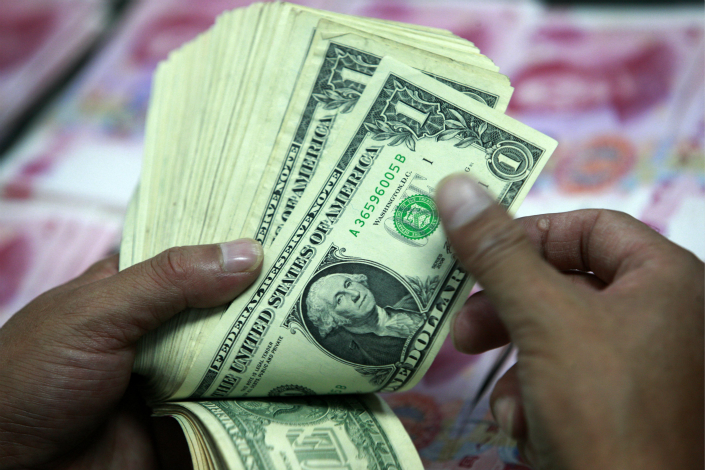China Regains Spot as Top U.S. T-Bond Holder in June

(Beijing) — China overtook Japan in June to resume its place as the biggest foreign holder of U.S. Treasury bonds as its net monthly purchases reached a six-year high, U.S. official data showed.
China’s holdings rose by $44.2 billion in June, the largest increase since July 2011’s gain of $149.4 billion and the fifth consecutive month of increase, according to figures released by the U.S. Treasury Department on Tuesday.
With a total portfolio worth $1.1465 trillion, China was the top holder of U.S. government debt, snatching the title it lost to Japan in October during an exodus of money from China over concerns about the economy.
The sizable June growth was fueled by an uptick in China’s foreign exchange reserves supported by a weak dollar and Beijing’s tight capital controls to stem money outflows, said Larry Hu, an analyst with Macquarie Capital Ltd.
However, capital flight pressures remain as investors are pessimistic about China’s growth outlook despite a stronger-than-expected expansion rate of 6.9% in the first half of the year, and seek to diversify their assets. Official data published on Monday showed economic momentum cooled in July.
“Looking ahead, China's capital outflows would increase in the second half of 2017 if the dollar rebounds,” Hu said. “But we believe the risk is manageable,” he added.
Chinese authorities took a series of measures starting in the fourth quarter of last year to halt outflows of capital, including curbing domestic companies’ overseas investments and enhancing scrutiny of individuals’ requests for foreign currency.
The country’s foreign exchange reserves, the world’s largest, have recovered slowly since February on a resilient economy and weakening dollar after falling for seven consecutive months through January 2017 to hit their lowest level in six years.
That stockpile increased by $46.3 billion in the first half of the year to $3.0568 trillion at the end of June before rising further to $3.0807 trillion last month, according to figures from the People’s Bank of China.
The bulk of the reserves are believed to be parked in U.S. government bills, which are considered safe despite their low yields.
The dollar’s depreciation was crucial for the stabilization of China’s foreign exchange reserves and will remain a key factor in the months to come, said Louis Kuijs, an economist with research firm Oxford Economics.
“The measures to reduce capital outflows have helped. But by themselves they would definitely not have been enough to stabilize foreign exchange reserves,” he said. “For me personally, the key factor is the U.S. dollar. If it remains weak — as is my firm’s forecast — the pressure on China’s foreign exchange market will remain low.”
So far this year, the dollar has depreciated around 4% against the yuan, 10% against the euro, 5% against the yen and 4% against the British pound, according to Bloomberg figures.
Contact reporter Fran Wang (fangwang@caixin.com)

- 1PDD Fires Government Relations Staff After Fistfight With Regulators
- 2Beijing Moves to Rein in Steel Exports With New Licensing Rule
- 3China Ramps Up Effort to Offload Vast Supply of Unsold Homes
- 4China’s Elite-Focused Schools Are Failing Most Students, Top Educators Say
- 5In Depth: China’s Developers Try to Modernize After Surge in Subpar Homes
- 1Power To The People: Pintec Serves A Booming Consumer Class
- 2Largest hotel group in Europe accepts UnionPay
- 3UnionPay mobile QuickPass debuts in Hong Kong
- 4UnionPay International launches premium catering privilege U Dining Collection
- 5UnionPay International’s U Plan has covered over 1600 stores overseas





